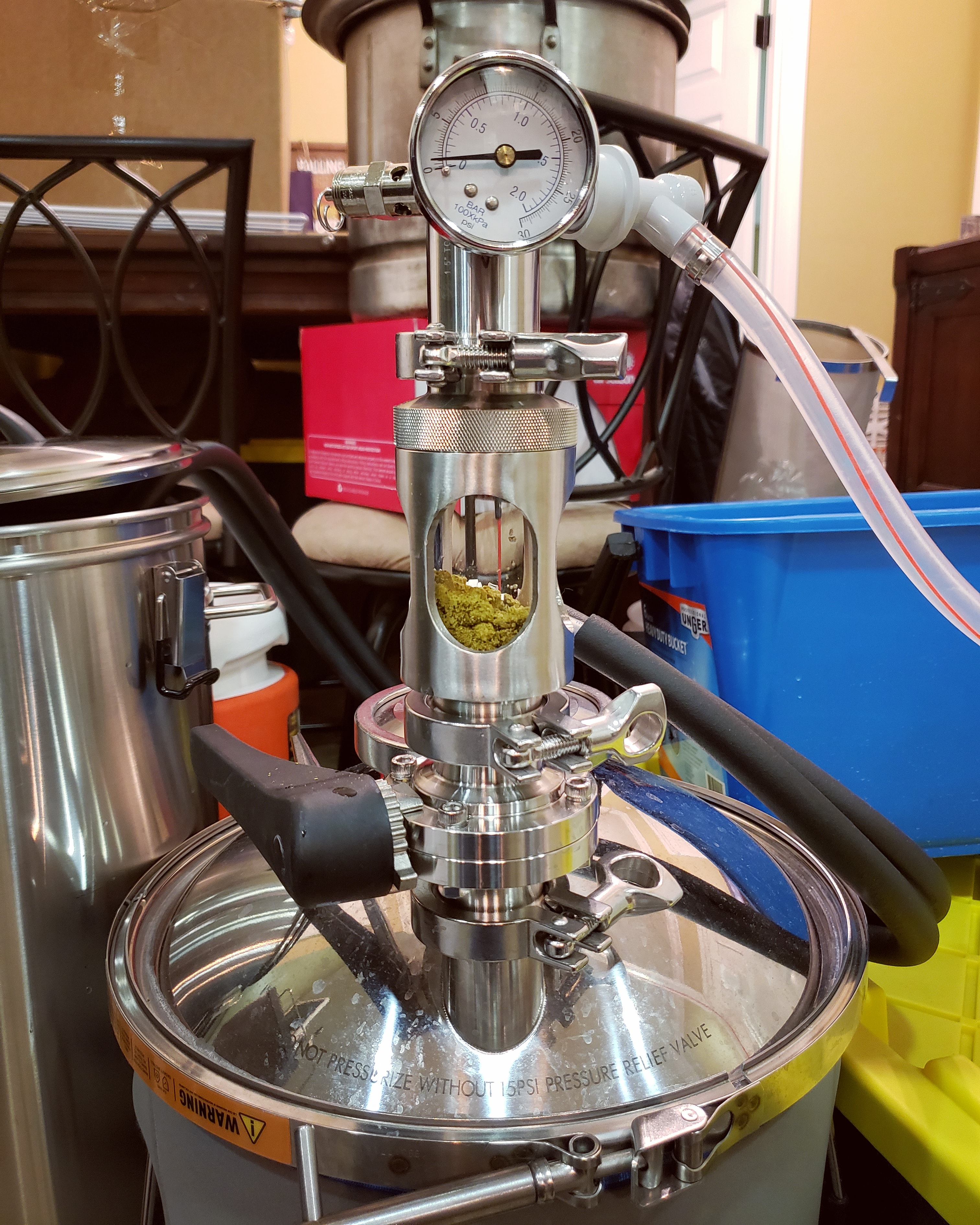BoilerInSoCal
Well-Known Member
- Joined
- Mar 18, 2009
- Messages
- 87
- Reaction score
- 56
So this week I dry hopped, cold crashed, transferred to kegs, cleaned and immediately refilled with a new brew. For dry hopping, I turned the gas on via the manifold and quickly dumped the hops through the 4". I found that pretty easy even with the chiller coil attached to lines etc. Perhaps not the best way to limit O2 ingress, but I could feel CO2 coming out of the port and I think I will stick to it for now. My dry hops all sank pretty quickly after breaking apart. So, I ordered the 2" TC gas post and will use that to circulate the hops next time they sink so quickly. During cold crash the psi went down from around 7 to about 5, so to transfer, I set my spund valve on my keg at 4...or so I thought. As soon as I opened the valve on the CF10, CO2 blew from the keg into the fermenter and I then noticed that my racking arm was still down, so that churned up some trub, but not too bad. Lesson(s) learned. The rest of transfer went very well. What I really liked was the ease of cleaning. I took it all apart since it looks like there are a bunch of nooks that things can get stuck in. It was easy to wash during mash and resanitize during the boil. As you can see, I am still learning, but this thread has been invaluable and I am really loving my CF10 (and Max2)!
Now to a question. How many of you BIAB? I do (wilser bag and tightest crush I can get on Barley Crusher), and I also let my boil/whirlpool hops go comando. This results in quite a bit of trub in the fermentor. Ground water is still warm here, so I have been transferring at 84 or so and have been waiting a few hours for the wort to get down to pitching temps, which also allows the trub to settle a bit. I've tried pre-pitch dumps and it seemed like I was losing a lot and the sight glass wasn't clearing up. I am wondering if I should even bother and just wait to dump until after fermentation? Or, does it make more sense to just overbuild even more (e.g., 13+ gallons into the CF10 to end up with 10 gallons in kegs) to account for all the loss? Anyone have experience with this?
Now to a question. How many of you BIAB? I do (wilser bag and tightest crush I can get on Barley Crusher), and I also let my boil/whirlpool hops go comando. This results in quite a bit of trub in the fermentor. Ground water is still warm here, so I have been transferring at 84 or so and have been waiting a few hours for the wort to get down to pitching temps, which also allows the trub to settle a bit. I've tried pre-pitch dumps and it seemed like I was losing a lot and the sight glass wasn't clearing up. I am wondering if I should even bother and just wait to dump until after fermentation? Or, does it make more sense to just overbuild even more (e.g., 13+ gallons into the CF10 to end up with 10 gallons in kegs) to account for all the loss? Anyone have experience with this?



